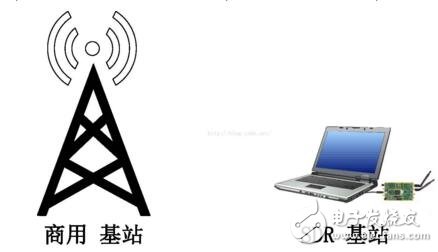Software Defined Radio (SDR) is a digital signal processing technology that enables the radio system's various functions to be defined and implemented through software on a general-purpose hardware platform. This includes front-end reception, intermediate frequency processing, baseband signal processing, and more. In other words, the entire radio system—from high-frequency signals, intermediate frequencies, baseband processing, to control protocols—is fully programmable via software. The core idea behind SDR is to place a wideband analog-to-digital converter as close to the antenna as possible, enabling early digitization of the signal. This allows the radio’s functionality to be more flexible, customizable, and adaptable, all controlled by software. In short, SDR represents a new wireless communication architecture based on digital signal processing (DSP), with software at its core.
Its connection to TD-SCDMA: TD-SCDMA derives its name from three key technologies—Smart Antenna, Synchronous CDMA, and Software Radio. The first letters of these technologies form the acronym "SCDMA." These technologies serve as the foundation for TD-SCDMA, making it one of the earliest standards to incorporate SDR principles.

Software Radio is a highly software- and computation-intensive technology. It is closely tied to the conversion between analog and digital signals, computational speed, complexity, storage capacity, and data processing methods. These factors directly influence the development and performance of SDR technology. Key components include broadband or multi-band antennas, analog-to-digital and digital-to-analog converters, Digital Signal Processing (DSP) technology, and real-time operating systems. These elements are essential in enabling the flexibility and adaptability of SDR systems.

As wireless communication continues to evolve, SDR has become a critical enabler for next-generation networks, allowing for greater interoperability, scalability, and efficiency. Its applications span from military communications to commercial mobile networks, making it a cornerstone of modern radio technology.
ELCB is an acronym for Earth leakage circuit breaker, which is a device placed inside a water heater, commonly referred to as ELCB electric leakage breaker. This circuit breaker has the function of disconnecting the device from the circuit whenever an electrical leak occurs through the human body when touching the electrical parts of the device.
ELCB is to limit the incident of electric shock inside the machine, disconnecting the power when there is a problem, ensuring safety for human life as well as fire and explosion prevention.
How many types of ELCB?
ELCB is often used in both civil and industrial applications.
For the domestic electricity system, the installation problem is not difficult, but in industry, the anti-shock for workers and the prevention of electrical leakage for electrical equipment with large capacity requires a bridge. Automatic anti-shock, high-power leakage protection, and often has a much higher price.
elcb,elcb 15ma,elcb 10ma,elcb breaker,circuit breaker,rccb,rcd residual current
ZHEJIANG QIANNA ELECTRIC CO.,LTD , https://www.traner-elec.com
